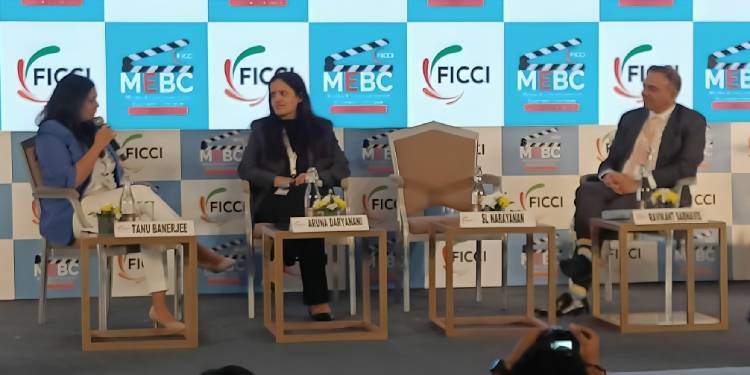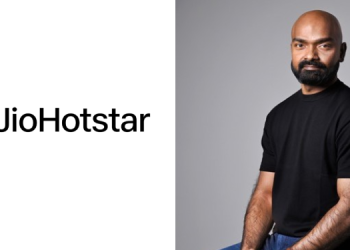The OTT landscape continues to evolve at an unprecedented pace, driven by changing consumer behaviors, technological advancements, and the ever-increasing competition for audience attention. At the FICCI MEBC South 2025, an insightful panel discussion titled “From Screen to Stream: Trends, Opportunities, and the Future of Content in the OTT Landscape” provided a deep dive into the industry’s key developments and challenges. The session was moderated by Tanu Banerjee, Partner at Khaitan & Co and featured a distinguished panel of speakers, including Ravikant Sabnavis, CEO of Arha Media, and Aruna Daryanani, Director of Amazon MX Player.
The Evolution of Content Consumption
The discussion opened with an analysis of how content consumption patterns have evolved in recent years. The panelists highlighted the shift from traditional television to digital platforms, with an increasing number of viewers opting for on-demand streaming services. This transformation has been accelerated by affordable internet access, smartphone penetration, and the growing preference for personalized content experiences.
Aruna Daryanani emphasized that audience engagement has become more nuanced, with viewers expecting high-quality, hyper-personalized content available across multiple devices. “We are witnessing a significant change in viewing habits where consumers are demanding flexibility, interactivity, and immersive storytelling,” she noted.
Regional Content: The Next Growth Frontier
One of the most compelling discussions centered around the rise of regional content. With streaming services increasingly targeting vernacular audiences, content creators and platforms are investing heavily in localized storytelling. Ravikant Sabnavis highlighted the success of regional OTT platforms in capturing niche markets: “The future of content lies in regional narratives. Audiences are looking for authentic storytelling in their own languages, and platforms that cater to this demand will lead the next wave of growth.”
Aruna Daryanani echoed this sentiment, stating that Amazon MX Player has expanded its regional content library to engage audiences beyond metro cities. She pointed out that regional content consumption has seen a surge not just in India but globally, as the diaspora seeks content in their native languages.
Monetization Models: SVOD, AVOD, and Hybrid Strategies
The panelists also delved into the changing monetization models in the OTT ecosystem. While Subscription Video on Demand (SVOD) remains a dominant model for premium content, Advertising-Based Video on Demand (AVOD) has gained traction as platforms seek to cater to cost-conscious consumers. Hybrid models that offer a mix of both subscription and ad-supported content are also emerging as a viable strategy.
“The Indian market is price-sensitive, and a one-size-fits-all approach does not work,” explained Sabnavis. “A hybrid model allows platforms to maximize reach while also driving revenue. Ad-supported content is essential to bring in first-time users, who may later transition to paid subscriptions.”
Daryanani highlighted how global platforms are experimenting with tiered pricing structures and bundled offerings to provide flexible options for users. The challenge, however, remains in balancing user experience with revenue generation.
Technology and Personalization: AI’s Role in Content Discovery
With an overwhelming amount of content available, discoverability remains a major challenge for OTT platforms. The discussion touched upon how Artificial Intelligence (AI) and Machine Learning (ML) are playing a crucial role in personalizing recommendations and improving user engagement.
“AI-driven algorithms are helping platforms curate content based on individual preferences, viewing history, and even mood-based recommendations,” said Daryanani. “This ensures that users spend less time searching and more time watching, enhancing their overall experience.”
Sabnavis added that AI is also being leveraged for content creation, dubbing, and localization, making high-quality content accessible to a broader audience.
Challenges in the OTT Ecosystem
Despite the opportunities, the panelists acknowledged several challenges facing the OTT industry:
- Content Saturation: With numerous platforms and content options, retaining user attention has become increasingly difficult.
- Regulatory Hurdles: The industry faces evolving regulations around content moderation, data privacy, and compliance.
- Churn Rate: Keeping users engaged and preventing them from unsubscribing remains a critical concern for platforms.
- Piracy Issues: Content security continues to be a pressing issue, with illegal streaming and downloads impacting revenue.
The Future of OTT: What Lies Ahead?
Looking ahead, the panelists agreed that the future of OTT will be shaped by a mix of technology, innovative storytelling, and strategic partnerships. Live streaming, interactive content, and immersive experiences using Augmented Reality (AR) and Virtual Reality (VR) are expected to become more prevalent.
Sabnavis concluded the discussion by stating, “OTT is no longer just about passive content consumption; it is about engagement, interactivity, and personalization. Platforms that adapt to these evolving trends will define the next era of digital entertainment.”
As the OTT space continues to expand, it presents an exciting landscape of opportunities for creators, platforms, and audiences alike. The key to sustained success will be innovation, adaptability, and a deep understanding of consumer preferences.

















